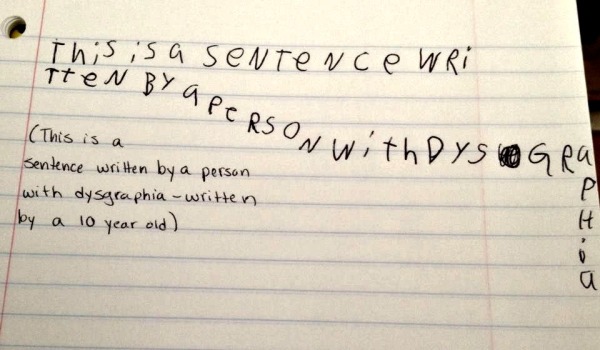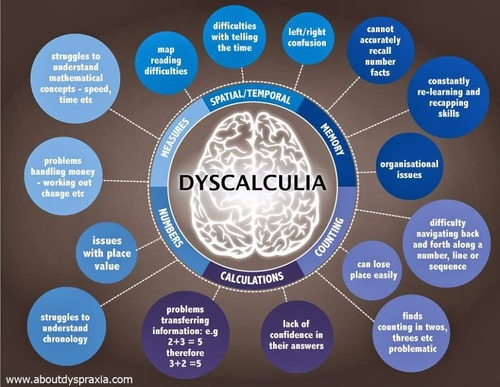A reader asked me last week if I’d written anything about ADD. I thought I had, but couldn’t find it, so for the next few weeks I’ll be addressing that along with a list of other disabilities both well-known, like dyslexia, and not-so-well-know, like dysgraphia and dyscalcula. Today we’ll focus on ADD/ADHD, which I’ll be referring to as simply ADD from here on in. The new Diagnostic and Statistical Manual (DSM)has omitted ADHD and lumped it all together under ADD. At first I was unhappy about that, but really, it’s all one thing with a couple of different aspects.
Usually self-diagnosable
ADD symptoms include trouble focusing, hyperactivity, and impulsive behavior.
People may experience:
Behavioral: hyperactivity, fidgeting, impulsivity, irritability, risky behavior, or lack of restraint
Cognitive: difficulty focusing, forgetfulness, lack of concentration, problem paying attention, racing thoughts, or short attention span
Mood: anxiety, boredom, excitement, or mood swings
Also common: depression, learning disability, or sleep deprivation
Consult a doctor for medical advice
( from https://www.google.com/webhp?sourceid=chrome-instant&ion=1&espv=2&ie=UTF-8#q=add%2Fadhd%20symptoms )
I’m going to be speaking for a while from my experience as a teacher, when I got my first real exposure to ADD and other learning disabilities. Going all the way back to 1952, when I started kindergarten, there was no recognition of learning disabilities. I never heard the term until I was in college, and it was passed over lightly. The general attitude was, “Oh, Johnnie/Susie just needs to pay attention. They’re lazy, undisciplined, rebellious.” And those children struggled through 12 years of school feeling inadequate, stupid, and like the odd man out.
I’m glad we’ve grown beyond that thinking. At least, most of us have. Sadly, there is still a segment of educators who do not accept the existence of learning disabilites (LD), and will make to allowances for them. But the number of teachers like that is decreasing, and I’m glad.
If you’ll glance at the symptom list above, you’re probably familiar with most of what you see. Kids with ADD have a terrible time staying focused on the issue at hand unless–big paradox here–they are intensely interested in it. If that is the case, they are able to shut out everything else. There could be an earthquake under their feet and they wouldn’t be aware of it. A parent can call to them several times and they will not hear. They’re not being disobedient every time this happens. Sometimes, probably, but they really do drift away from the world around them and it can be very hard to bring them back. This is especially true if their interest lies in electronics. There is something mesmerizing about video games, tablets, X-Boxes, and so on.

ADD does not always include hyperactivity. Often, it is simply a drift into another world. It can be triggered by something as simple as a word spoken by the teacher or parent that sends a kid’s brain off on a rabbit trail. When he comes back to earth, he realizes he’s missed something that was probably important, but he’s learned not to ask the teacher to repeat. That usually doesn’t end well for him.
I have pictured this type of ADD behavior as a balloon that gets blown up and then let go, and it bounces all over the room as the air is expelled. There’s no controlling its action. When it’s empty, it just kind of settles somewhere and looks pathetic.
People with ADD can be impulsive. Things blurt out of their mouths practically before they know they were thinking. Or their interest can be grabbed and they’ll drop whatever they’re doing to pursue that. They leave things unfinished. They don’t put things away. My husband was diagnosed with ADD several years ago. It cleared up a lot of things for me that annoyed the daylights out of me. I still get annoyed, but now I understand. For instance, if he’s working on the computer, writing down lists, websites, and so on, the list will stay right where he leaves it when he goes to make a snack, which takes him to the kitchen where he gets involved with maybe emptying the dishwasher, which makes him think of something he needs to do in the basement, which will take him outside to the shed to get a tool, which reminds him he needs to check the oil in the car. . . . .and the mess he left on the computer desk remains there until I need the computer and move his stuff aside.
Remember Billy from The Family Circus?
Another feature of ADD than can be easily miss-identified is a tendency to moodiness. Sometimes the assumption is made that the person has Bipolar Disorder, but it’s really just ADD–which is a lot easier to deal with.
Okay, I could spend a lot of time just describing the life and times of people with ADD, but I want to focus for a few minutes on coping skills. First, let’s talk about medication.
Is ADD over-medicated? Oh yes, without any doubt. After all, it’s the easy fix for the parents, teachers, and even the kid himself. There are, however, other tools and resources that are helpful without medicating a child into a different personality. I hated to see zoned-out kids coming to my classroom, because the medication robbed them of their creativity and quirky brain patterns. Yes, it helped them concentrate. Sometimes the results were outstanding, and I am not totally opposed to the careful use of medication.
I have learned, over the years, that one of the best helps for ADD is to have an orderly, non-chaotic home in which there are boundaries and consequences. The child with ADD needs to learn how to deal with his problem. As an adult, he’s not going to get special allowances made for his LD. He’s going to have to figure out how to do his job without wandering all over the place chasing rainbows. At some point, this child is going to need to learn some coping skills that will carry his often-gifted intelligence into useful work and family life. He will not always be a child whose parents and teachers will protect him with special learning plans and a bottle of pills.
For example, back to my longsuffering husband, who doesn’t mind at all when I use him as an illustration. He would start his day by jotting down tasks on a piece of paper, fully intending to follow his list. Of course, the paper was almost immediately lost, and off he would go in his usual erratic patterns. One day, I bought him several little pocket-sized flip-top tablets, and suggested he try writing down just one task on each piece of paper, tearing it off when the task was finished. Then he could go on to the next thing. One of his problems was that, in his work, he was often called away from what he was doing to cover some sort of emergency, and then he’d forget what he’d been doing before. The tablet method kept him on task. He loved it, and still uses it.
When I was teaching, I used to put my LD kids in a sandwich between me and his parents. He brought his assignment pad to me after class, wrote his homework assignment, which I then signed and dated. At home, his parents checked what the assignment was, then signed off on it when it was finished. This works only if the teacher and the parent are diligent and demand to see the notebook. The kid will not remember to offer it. He will also probably not remember to put it in his backpack to go back to school the next day. The parent will need to supervise that for a while until a habit is formed. Sometimes it helps to post a checklist that the child will see just as he goes out the door. I recommended to one frustrated mom that she make a big red STOP sign on the door, with a checklist at the bottom. Visuals are very important for ADD kids. Words will go in one ear and right out the other. Bright, clear graphics are more likely to grab their attention.
Today, there are many resources to help you help your ADD child. Your local library is a good place to start looking. The internet is invaluable. Other parents have dozens of good, helpful ideas that they’ve shared by way of blogs. Easy to find, too. I just typed “parents find ways to help ADD kids” into my Google search, and came up with pages and pages of articles.
Please don’t give up in despair. These kids are often highly intelligent and gifted in some area. My husband is a genius with his hands. He can figure out how a thing works, take it apart, fix it, and saves us bundles of money. He has recently remodeled my kitchen, almost completely without professional help. The only thing he didn’t do was cut and install my new granite counter tops. There was some wonderful help from friends, but Terry was the brains behind the building. In nearly 47 years, I have never, ever called a repairman of any kind. Terry does it all. And he does it very well. His ADD slows him down sometimes, but his natural intelligence and giftedness are amazing.
ADD doesn’t have to ruin your child’s life, or yours.










